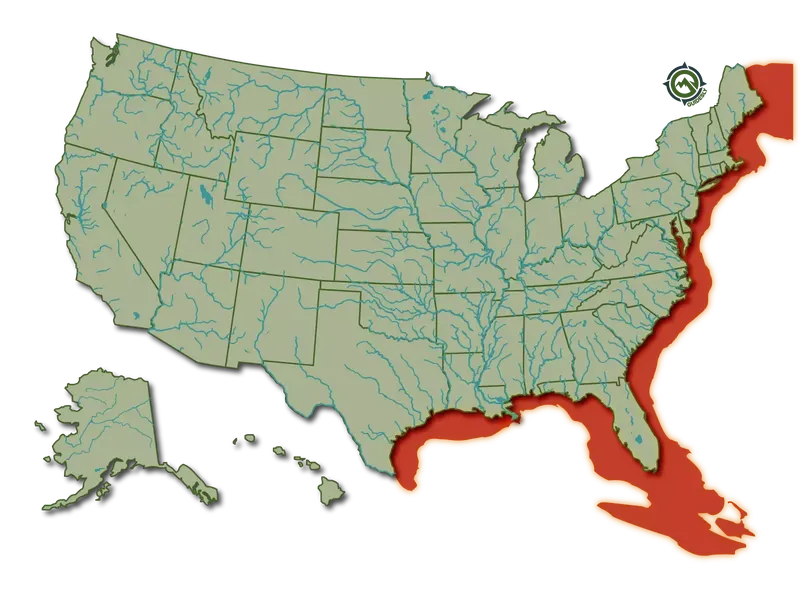Yellowfin

Species Details
Ocyurus Chrysurus
Lutjanidae
Perciformes
Onshore, Reef, Nearshore, Backcountry
1 - 11 lbs.
8" - 34"
Yellowfin (Ocyurus Chrysurus) Fish Description
The yellowfin is an oval-shaped fish with a pointy head and an almost symmetrical body profile. It has a bright yellow stripe stretching from snout to tail that pales as it matures. The top half of its body is darker, ranging from olive to blue with yellow splotches. The bottom half is paler, usually white or light pink.
Its caudal fin is prominently forked and is a bright yellow. Its other fins are also yellow or yellow-green with a continuous dorsal fin that has 12-13 rays and an anal fin with 9 rays. The area below the eye, snout, and jaws are scaleless.
The yellowfin is unique and is not confused with other species, only comparable in terms of flavor. Its white, flaky flesh is a known substitute for grouper, swordfish, tilefish, and amberjack.
Yellowfin Diet & Size
Most yellowfin caught by anglers range from 8 to 14 inches and do not usually surpass 16 inches. However, it’s been recorded at a length of 34 inches, and the international record for weight is 11 pounds.
This small fish is a nocturnal feeder that usually feeds above the substratum. Its diet primarily consists of shrimp, crabs, octopus, squid, cuttlefish, marine worms, and smaller bony fish. They may also feed on zooplankton and pelagic fish eggs.
Interesting facts about the Yellowfin
- It’s commercially farmed in various parts of the world for sashimi
- It’s the only species in its genus.
- It’s popular for public aquariums and hobbyist aquarists
- The yellowfin population in the Bahamas is under threat from the invasive lionfish
- Yellowfinis reported to hybridize with the lane snapper and cubera snapper.
- Smaller yellowfin are called “Tails” while larger ones are called “Flags”
Fishing Techniques: How to Catch a Yellowfin
Yellowfin is sought by recreational anglers and is a game fish that can be handled by children. Using light tackles with this fish is suitable, especially since they are scared by thicker lines and bigger hooks.
A popular way to catch yellowfin is by chumming from a vessel. After throwing the chum, it’s recommended to wait several minutes to let the fish get comfortable with it. Be aware of which way the current is drifting so that the chum doesn’t go underneath or in front of the boat.
Smaller yellowfin will attack any bait or lure, but the good size ones are smarter and will avoid any lines they spot in clear waters. To avoid spooking them, use a 15lb mainline and a 20lb to 30lb fluorocarbon leader with a medium action spinning rod. If fishing multiple lines put them in one at a time.
A small strip of dead bait such as ballyhoo, shrimp, bonito, or minnows wrapped in an oat ball works well in mid-depth to deeper waters. For shallower depths, bare bait and even live bait will be effective. A size 1/0 J-hook with a 1/16 ounce jig head is suggested to help ease the bait to mix with the chum.
Still fishing, drift fishing, and trolling are other popular techniques to combine with your preferred lures or by casting with jigs and flies. The yellowfin is typically hooked in the range of 30 to 120 feet deep around reefs or structures. Warmer months are better for catching this fish, but they are available year-round.
Yellowfin Habitat & Distribution
The yellowfin is primarily a marine reef-associated fish usually found inshore. It has been known to also live in habitats with soft bottoms or submerged vegetation. It usually dwells at depths between 33 and 230 feet, but can also be found near the surface, and as deep as 590 feet.

The yellowfin is primarily native in the Western Atlantic, ranging from Massachusetts (USA) to southeastern Brazil. It’s been documented in the Bermuda, Gulf of Mexico, and the West Indies. Their normal range is around south Florida, the Bahamas, and the Caribbean.
Spawning occurs in large groups offshore at the reef edges throughout the year, with varying seasonal peaks between March to August. Each female can have anywhere from 99,000 - 1.5million eggs and once fertilized, can hatch in about 20 hours.
Juveniles are often seen near seagrass beds or vegetated inshore waters in estuaries and bays. Once the yellowfin becomes mature, it’s usually in coastal waters, most commonly around nearshore reefs. They frequently form schools and remain in the same area throughout adulthood, living up to 14 years.






